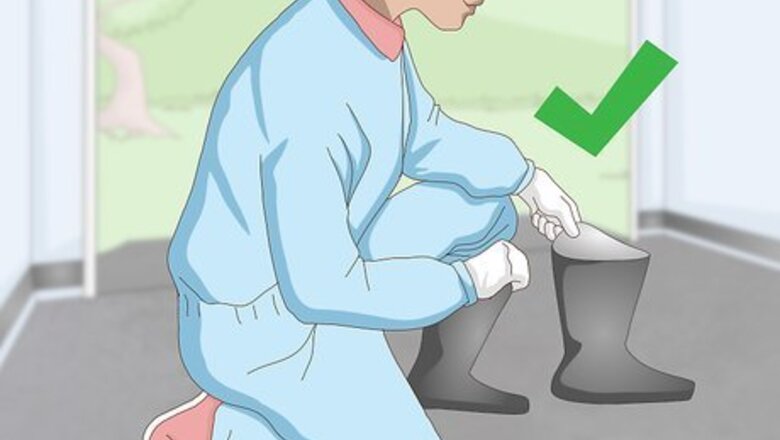
views
Cleaning the Asphalt
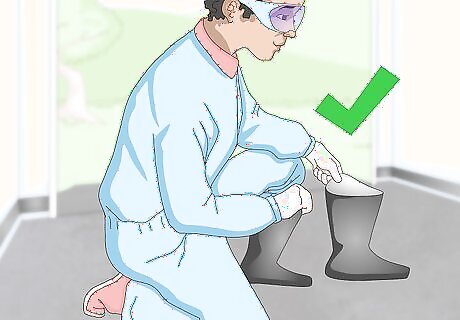
Wear safety goggles, gloves, old clothes or overalls, and rain boots. When working with chemicals, it's important that you wear the correct protective gear to avoid injury. You can buy these items at the local hardware store or home center.
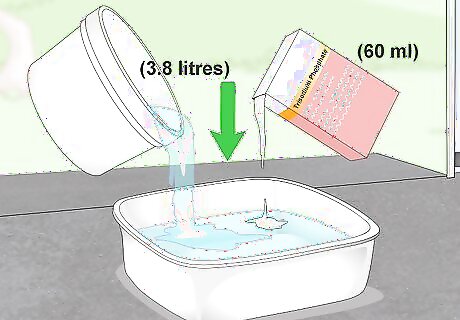
Make a trisodium phosphate and water solution. Trisodium phosphate is very effective at cleaning and stain removal. However, it should be diluted before use as it's a very potent chemical. Mix 60 millilitres (2.0 fl oz) of trisodium phosphate with 3.8 litres (1.0 US gal) of water. Always read the instructions on the trisodium phosphate packaging before mixing.
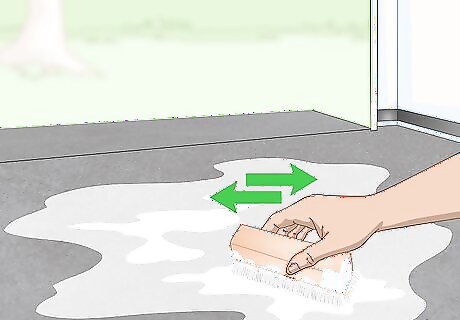
Scrub the asphalt with a brush and the trisodium phosphate solution. Pour the solution over the asphalt. Then use the hard-bristled brush to rigorously scrub the asphalt. Focus extra time on any areas of the asphalt that are especially dirty or stained.
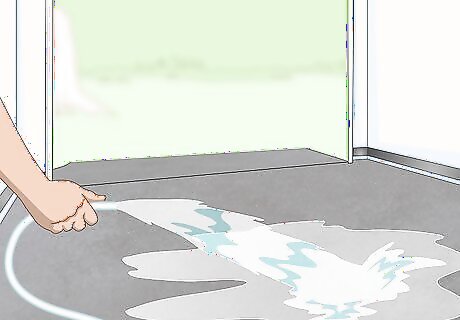
Rinse the asphalt with a hose to get rid of the solution. Trisodium phosphate damages paint, so it's important to remove it before painting. After scrubbing the asphalt with the solution, use a hose to wash the asphalt. Don't use a pressure or power washer at this point. Focus the hose on the solution and rinse it in the direction of the nearest drain. The point of using the hose is to rinse the trisodium phosphate solution. If you use the pressure washer to rinse the trisodium phosphate, it will embed into the asphalt.
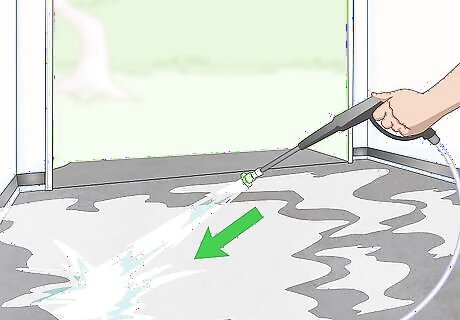
Use a pressure washer or power washer to clean the asphalt. Hook your pressure washer or power washer up to a water supply. Stand far away from the contact point of the water and aim the power washer well away from your face when using it. Pull and hold the trigger on the power washer to spray the asphalt. Make sure you follow the safety precautions and ensure all animals and people are clear of the asphalt before you begin.
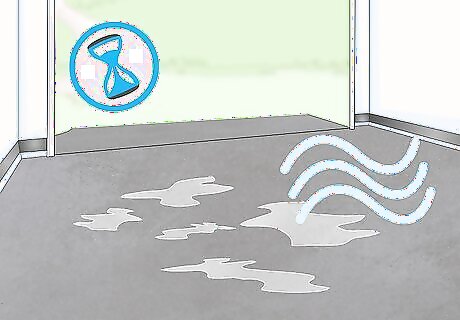
Give the asphalt time to dry after washing it. Since you're working outside, it depends on how long it will take the asphalt to dry. In hot weather, it might only take a couple of hours. In wet weather, you might have to wait a few days. Don't paint the asphalt until it's completely dry.
Applying the Primer and Paint
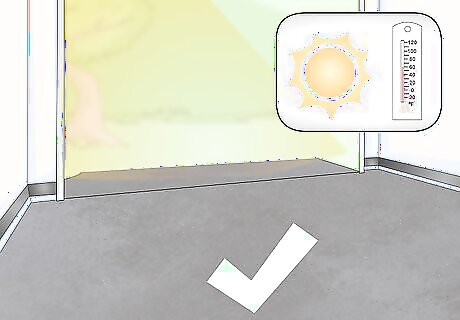
Wait for dry, hot weather before you paint or prime. There's no point applying your paint to the asphalt when it's meant to rain that day. Check the weather forecast to make sure you can expect no rain for at least the next 24 hours. Your paint will dry best when it's warmer than 50 °F (10 °C) outside.
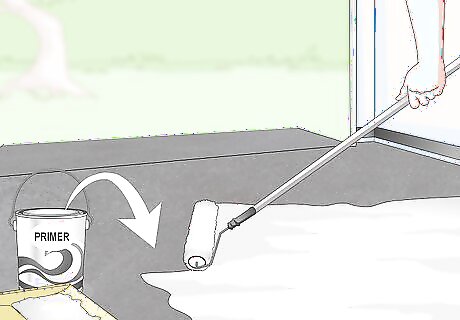
Apply primer to the area before you paint. Buy asphalt or concrete primer at your local hardware or paint store. Use a roller with an extended handle to apply the primer to the area. The primer will take around 3 hours to dry when the temperature is 75 °F (24 °C). Don't let the primer puddle or gather in certain areas. Use the roller to spread puddled primer to other areas.
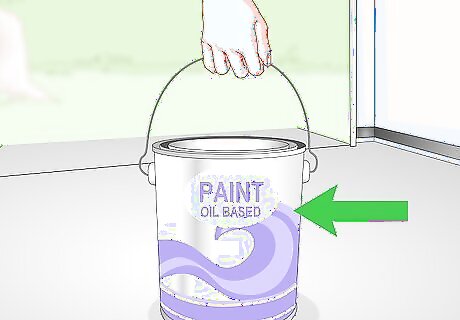
Select an oil-based paint if possible. Oil-based paint is the best choice as it's incredibly durable. However, oil-based paints have been banned in a lot of areas due to the effect they have on the environment. If oil-based paints are banned in your area, purchase some water-based latex or acrylic paint instead.
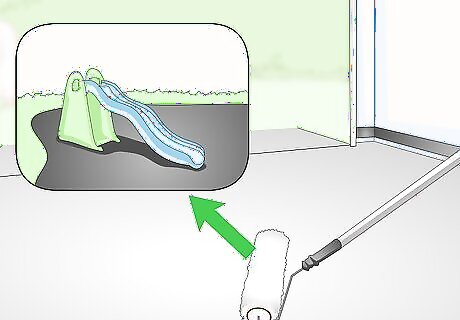
Use a brush or paint roller if you're working with a small area. If you're painting a playground and you need to be accurate, you can't go wrong using a paintbrush or paint roller. If you're painting a small parking lot, the roller will also do. Get a soft- or medium-bristle paintbrush. A hard-bristled paintbrush won't do the job as needed on the asphalt. Use a large flat or striker paintbrush. Both of these paintbrush styles are great for exterior painting. Select a roller that is 7 inches (18 cm) in length. This size allows for accuracy and speed.
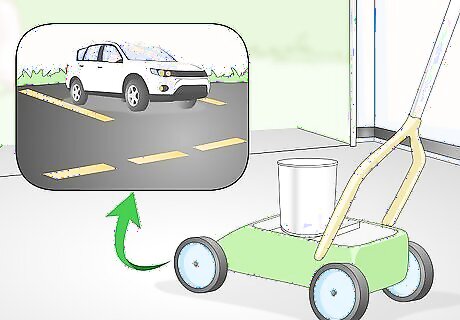
Rent a striping machine for a large parking lot. Striping machines are built like lawnmowers. Simply add the paint to the striping machine, pull the handle, and push it over the intended area. Striping machines make applying paint to large areas much easier. Release the handle to cut off the flow of paint. You can buy a striping machine from your local hardware store for $150 and upwards. Or, contact your local tool rental store to ask if you can rent the machine. It will be much cheaper to rent than to buy, especially if you're only using it for a single job.
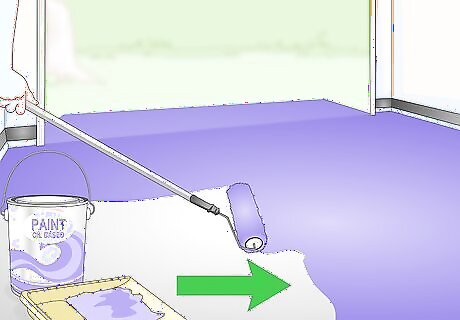
Paint your first coat after the primer has dried. Use either a paintbrush, roller, or striping machine to apply your first coat of paint to the asphalt. Make sure the primer has dried first by dabbing it with a tissue. If the tissue isn't damp after you dabbed it, the primer is dry. Apply the paint as evenly as possible to all the areas you want to paint. Use controlled strokes with the brush or the roller. Focus on being as neat as you can be. Walk at an even, measured pace with the striping machine. If you walk too slowly, you'll apply too much paint. If you walk too fast, you'll apply too little. If people might pass through the area after you've applied the first coat, use cones and tape to protect the area while the paint dries. Give the first coat 5 to 6 hours to dry after you've applied the first coat.
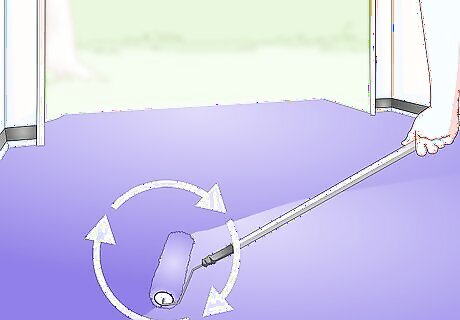
Add the second coat after the first coat has dried. You can use a tissue again to test if the first coat has properly dried before you apply the second. When applying the second coat, you need to be as careful as possible to match the first coat. If painting on a playground, make sure you don't color over the outline or shapes you made with your first coat.
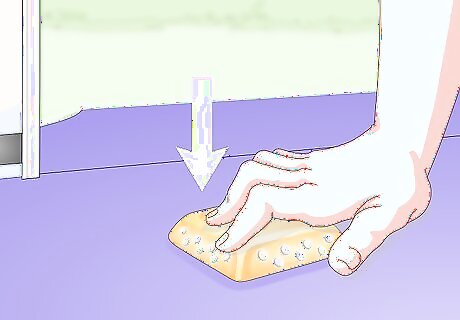
Place equipment on the wet paint if you want to add studs or beads. If using road studs or glass beads, you need to apply these items when the paint is still wet. Use gloves and push them into the wet paint. You might need to paint the base of these items to firmly attach them to the asphalt.














Comments
0 comment